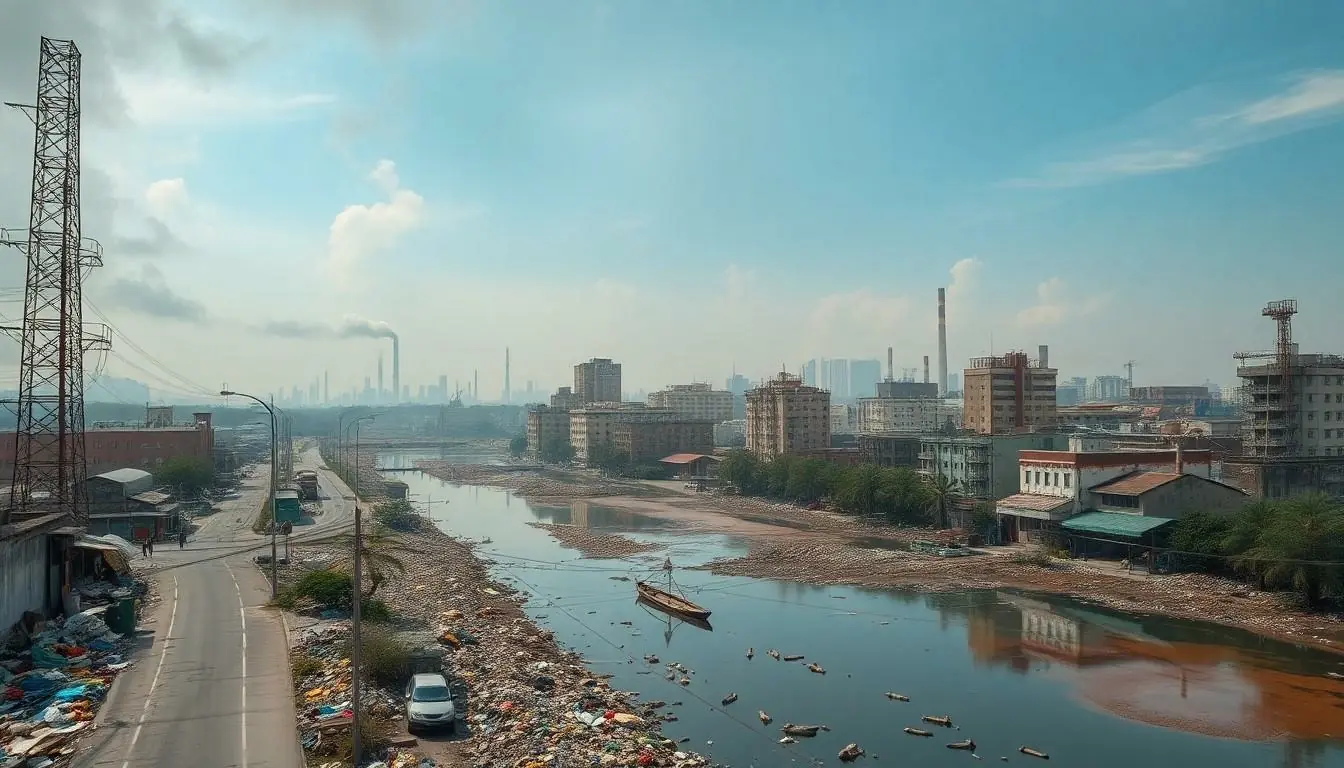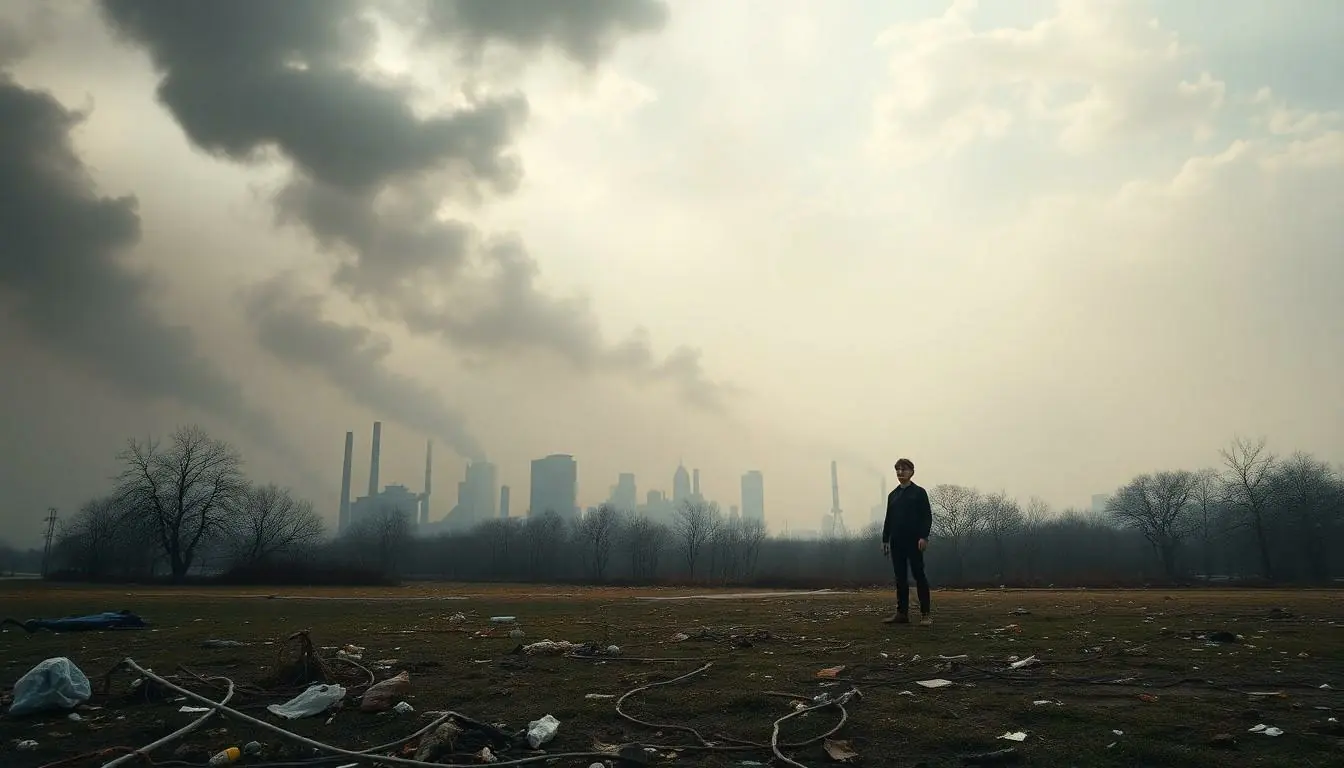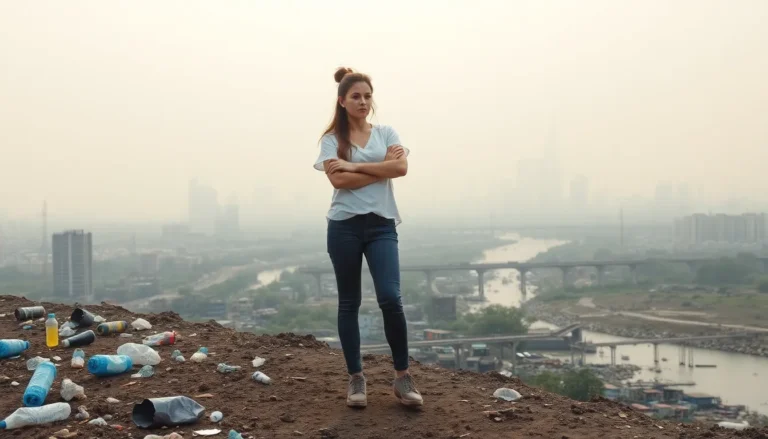Pollution has a knack for sneaking into our lives like that one friend who always shows up uninvited. It clings to our air, water, and even our beloved landscapes, leaving behind a not-so-glamorous mark. But what if capturing these moments could spark a change? Pictures of pollution tell a story that words often can’t convey, revealing the stark reality of our environment’s struggles.
From smog-filled cities to litter-strewn beaches, these images serve as a wake-up call. They remind us that what we see is just the tip of the iceberg, and it’s high time we address the mess. So grab your camera and prepare to see the world through a different lens. These powerful snapshots might just inspire action and ignite a movement toward a cleaner, greener future.
Table of Contents
ToggleUnderstanding Pollution Through Pictures
Visual storytelling plays a crucial role in depicting pollution’s impact on the environment. Pictures convey emotions and messages that words alone often cannot express.
The Impact of Visual Imagery
Visual imagery shapes public perception of pollution significantly. Well-composed photographs highlight areas affected by environmental degradation, such as littered landscapes and toxic waste sites. Images showcasing polluted cities, with smog-filled skies, elicit emotional responses that prompt awareness. Captivating visuals attract attention, making it easier for the public to grasp the urgency of the issue. Clear visuals can also inspire communities to take action against pollution, driving grassroots initiatives to promote cleaner environments.
Capturing the Essence of Pollution
Capturing pollution through photography requires a keen eye for detail and context. Various elements reflect the severity of ecological degradation, such as industrial waste spilling into rivers. Photographs of polluted beaches demonstrate the impact of human activity on marine ecosystems. Compelling images can portray the contrast between natural beauty and environmental damage, emphasizing the need for change. Each picture tells a story that brings awareness to specific pollution issues, encouraging viewers to become advocates for environmental preservation.
Types of Pollution Illustrated

Visual representations effectively showcase various pollution types, emphasizing their widespread impact on the environment. Understanding these forms of pollution enhances awareness and inspires action.
Air Pollution
Air pollution significantly affects health and the environment. Smoke-filled skies from industries and vehicles show the rising levels of harmful particles in the air. Particulate matter causes respiratory issues, while visible smog blankets urban areas. Observing images of factories emitting thick smoke or polluted urban landscapes captures the urgency to address this issue. Documenting these situations raises awareness about the quality of air people breathe and the need for cleaner alternatives.
Water Pollution
Water pollution endangers aquatic life and human health. Contaminated rivers and lakes illustrate the consequences of industrial waste and agricultural runoff. Photographs of oil spills reveal the stark contrast between the natural beauty of water bodies and their degradation. Toxic chemicals in waters kill fish and disrupt entire ecosystems. Showcasing these images highlights the importance of conserving freshwater resources and promoting sustainable practices.
Land Pollution
Land pollution results from waste accumulation and improper disposal. Trash-filled landscapes and overflowing landfills depict the seriousness of this issue. Images of derelict sites, litter-strewn parks, and illegal dumping grounds evoke strong emotions. Contaminated soil affects agriculture and local wildlife. Capturing these realities reinforces the need for robust waste management and community involvement in keeping environments clean.
The Role of Photography in Activism
Photography serves as a powerful tool in environmental activism, helping to capture and convey the impacts of pollution.
Raising Awareness
Images of pollution starkly highlight environmental issues. Captivating photographs of litter-strewn beaches and smog-laden cities create emotional connections. Each visual representation engages viewers, urging them to reflect on the state of their surroundings. Photographers document dire situations, effectively showcasing the consequences of human negligence. Such imagery circulates widely on social media, increasing its reach and impact. The strong visual element captures attention in ways that words often fail to achieve.
Inspiring Change
Visual storytelling motivates individuals and communities to take action. Pictures that reveal the stark contrast between nature and pollution evoke empathy and a sense of urgency. Captured moments of environmental degradation encourage renewed discussions about sustainability. Collective awareness leads to community initiatives aimed at reducing waste and restoring natural habitats. Photographs of successful clean-up efforts also inspire other communities to follow suit. By highlighting positive change through imagery, photographers foster a culture of environmental stewardship and advocacy.
Notable Photographers and Their Work
Photography highlights pollution’s impact through compelling visuals. Many photographers have dedicated their craft to capturing environmental degradation, raising awareness about the urgent need for change.
Pioneers in Environmental Photography
Pioneers like Ansel Adams and Edward Burtynsky transformed environmental photography. Ansel Adams focused on natural landscapes, emphasizing conservation through stunning black-and-white images. Edward Burtynsky, on the other hand, explores industrial landscapes. His large-scale photographs reveal the stark contrast between nature and human intervention. Their work inspires future photographers to address pollution with seriousness, informing audiences about the ecological challenges the planet faces.
Contemporary Voices in Pollution Photography
Contemporary photographers continue to shine a light on pollution. Chris Jordan captures the devastating effects of consumerism, portraying the impact of plastic waste through haunting imagery. Meanwhile, Eliza Gregory highlights the plight of landscapes afflicted by climate change. Each artist uses their lens to provoke thought and encourage dialogue on environmental issues. Their creative works emphasize the ongoing fight for ecological preservation and motivate public engagement in sustainability efforts.
The impact of pollution on our planet is undeniable and visual storytelling through photography serves as a powerful tool in raising awareness. Striking images not only capture the harsh realities of polluted environments but also evoke emotional responses that can inspire action. By showcasing the stark contrast between beauty and degradation photographers play a vital role in environmental advocacy.
Encouraging individuals to document pollution and share their perspectives can foster a collective movement towards sustainability. Each photograph has the potential to spark conversations and motivate communities to take meaningful steps towards a cleaner future. As awareness grows through these visuals the hope for a healthier planet becomes more attainable.





